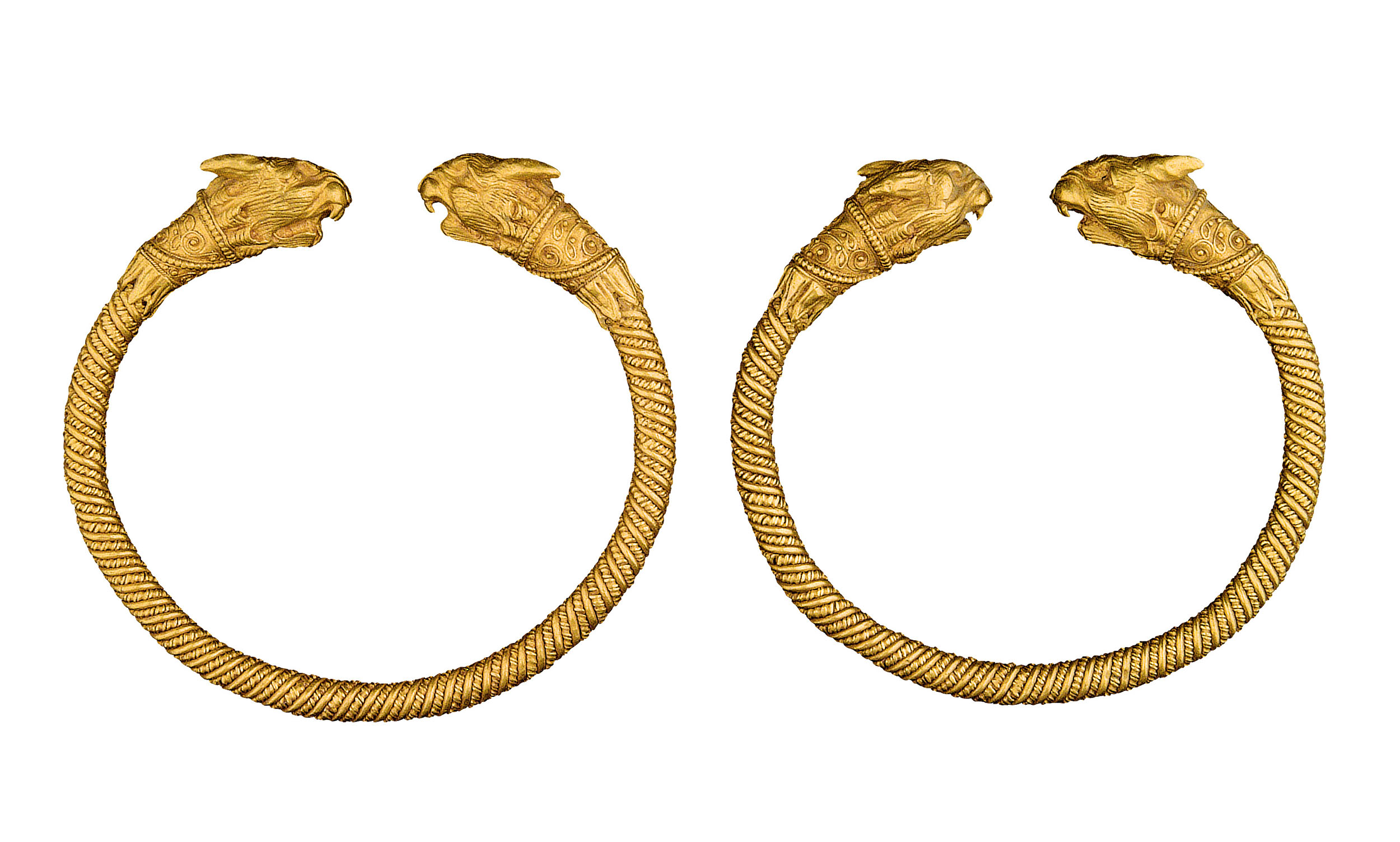



The two bracelets have a cylindrical loop and terminals in the form of animal heads. Around the loop, two gold wires – one plain, one granulated – are tightly wound. The terminals (a combination of lion and griffin heads) have been made separately of two parts each, and then joined to the loop. The joins have been carefully covered with decorative elements and triangular cut-out ‘tongues’.
This type of bracelet (with symmetrical animal-shaped terminals, e.g. lion heads, ram heads, snake heads etc.) has oriental origin. Such bracelets were popular in Achaemenid Persia and gradually spread all over the Eastern Mediterranean. The technique was demanding, as it combined hammering with filigree and granulation in tiny scale.
PUBLICATION
– Laffineur R. 1980. ‘Collection Paul Canellopoulos (XV). Bijoux en or grecs et romains’, Bulletin de correspondance hellénique 104, 345-457, esp. 59-60.
– Saraga Ν. 2006. Cat. no. 144, , in Choremi-Spetsieri Α. – Zarkadas Α. (eds), The Paul and Alexandra Canellopoulos Museum. Ancient Art, Athens, 230-231.